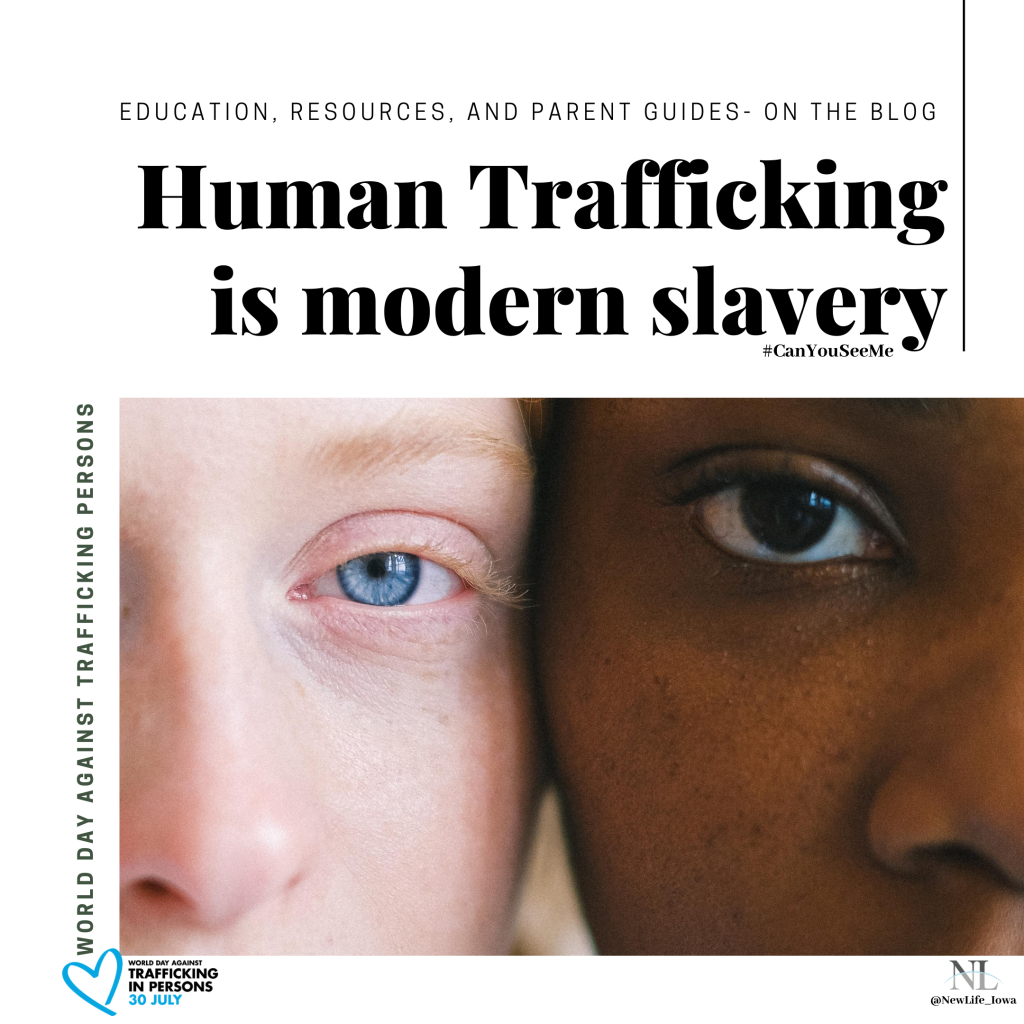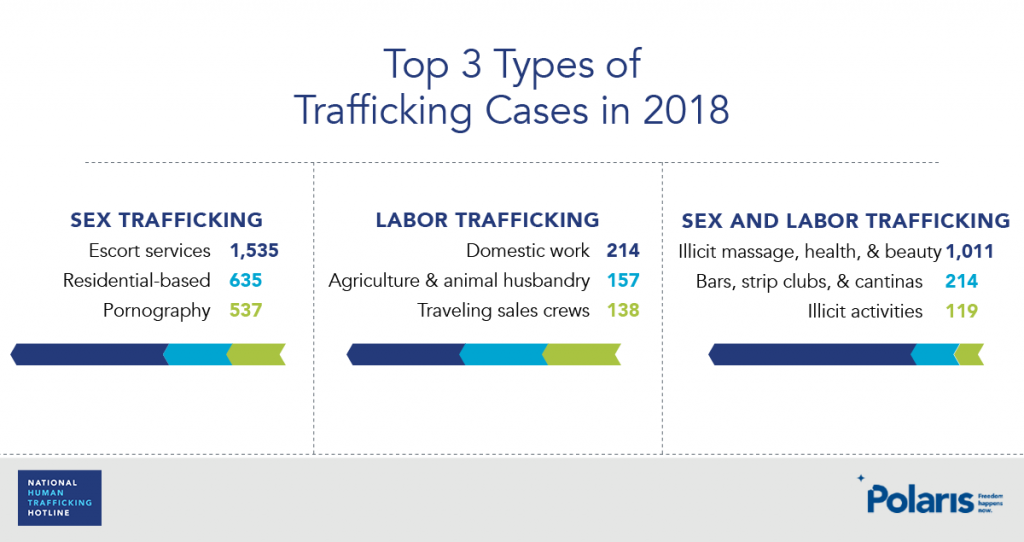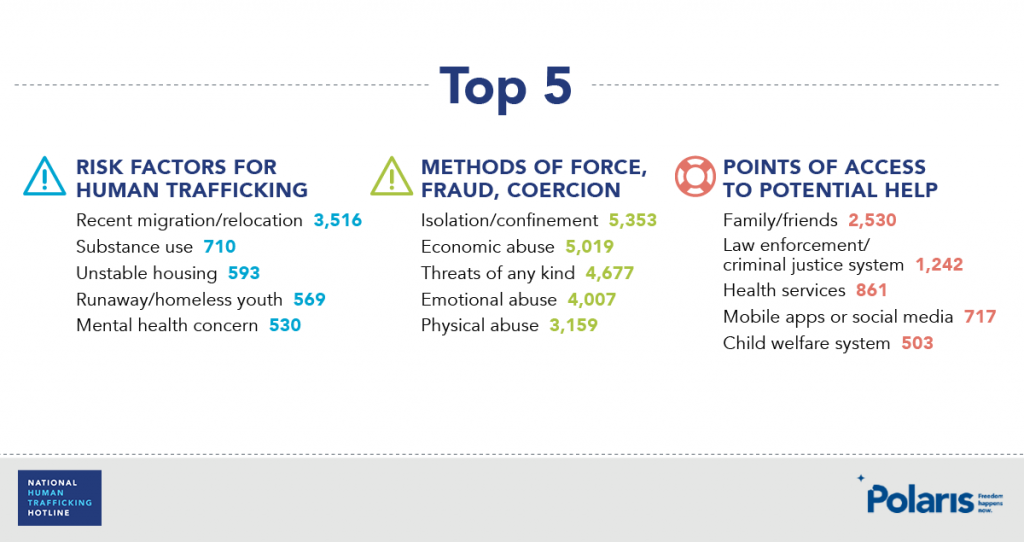Human Trafficking: what is it and how to talk to your children and teens

Human trafficking is slavery. There are millions of slaves in the world today. More than ever before in human history. Only an estimated 1% of victims are ever rescued. It is the fastest-growing criminal industry in the world, generating more than $150 billion USD every year.
Human trafficking is a crime that strips people of their rights, ruins their dreams, and robs them of their dignity. It is a crime that shames us all. Human trafficking is a global problem and no country is immune. Millions of victims fall into the hands of traffickers, lured by fake promises and deceit.
Human trafficking can include sexual exploitation, forced labor, bonded labor, involuntary domestic servitude, child soldiers, and organ harvesting.
The World Day Against Trafficking in Persons is observed annually on July 30 to raise awareness about human trafficking and to promote and protect the rights of trafficking victims. The World Day Against Trafficking in Persons was established by a United Nations resolution and first observed in 2014.
“In 2018, Polaris worked on 10,949 cases of human trafficking reported to the Polaris-operated U.S. National Human Trafficking Hotline. These cases involved 23,078 individual survivors; nearly 5,859 potential traffickers and 1,905 trafficking businesses. Human trafficking is notoriously underreported. Shocking as these numbers are, they are likely only a fraction of the actual problem”.
If you need help or you suspect someone else is a victim of trafficking- REPORT IT: Call 1-888-373-7888 or text “BeFree” 233733 . You can also find more information at the end of this post.


TRAFFICKING IN IOWA
Human trafficking is a form of modern slavery that occurs in every state, including Iowa. The National Human Trafficking Hotline (NHTH) works closely with service providers, law enforcement, and other professionals in Iowa to serve victims and survivors of trafficking, respond to human trafficking cases, and share information and resources.
In 2019 the NHTH operated by Polaris received 98 reported cases of human trafficking, identified 147 victims and survivors, and were contacted 246 times that referenced Iowa (only reporting cases that referenced Iowa at least three times). The overwhelming majority (74%) were sex trafficking cases and 12% labor trafficking. 86% of the cases reported were female; 75% of the cases reported were over 18 years of age. While these numbers may not shock you, they are statistically underreported. Polaris estimates that we only know about a small fraction of the true numbers of people trafficked every year.
WHAT CAN WE DO
As we dive into this uncomfortable topic you may be asking yourself, “what can I do? I am just one person”. First, educate yourself. In addition to reading this post, I have linked resources below that you can look at. Then, pick one or two action steps to start. Here are a few ideas to get you started:
- Post on social media
- Donate money
- Donate airline miles
- Contact elected representatives
- Educate others
- Volunteer in the community to fight trafficking and the factors that lead to trafficking (poverty, addiction, hopelessness)
- Report suspicious activity to the trafficking hotline- If you suspect it, report it.
- Educate your children
Parents– Check out these A21 guides on how to talk to and protect your children or teens from human trafficking.
Here is some of the information contained in those guides:
For children:
Indicators: Some signs or red flags that your child is possibly being trafficked or groomed for trafficking include:
- Displays sudden changes in academics, behavior, or appearance
- Acquires new and oftentimes older friends
- Owns new items that they would not be able to afford or you did not buy for them (physical items or digital items such as avatar skins for online gaming)
- Chats frequently online, over social media platforms, or within video games (they can often try to hide this behavior)
Where are kids trafficked: Social media platforms, video games, online chat rooms, friends’ homes, group homes, parties, school, parks, or other places where kids may spend time.
Important topics to bring up with your child: Personal value (bodily care and bodily respect), Personal boundaries and space (safe boundaries and safe space). This can look like teaching your child their right to say no, and the differences between safe and unsafe secrets, touch, and online conversations.
For Teens:
Indicators: Some signs or red flags that your teen is possibly being trafficked or groomed for trafficking include:
- Acts uncharacteristically promiscuous and/or makes references to sexual situations or terminology that are beyond age-specific norms
- Displays sudden changes in their academics, behavior, or attire
- Acquires new and oftentimes older friends or has a noticeably older “boyfriend” or “girlfriend”
- Owns new items that they would not be able to afford or you did not buy for them (physical items or digital items such as avatar skins for online gaming)
- Chats frequently online, over social media platforms, or within video games (they can often try to hide this behavior)
Where are teens trafficked: Social media platforms, video game live communication or chat rooms, friends’ homes, group homes, parties, and jobs that target teen primarily (fast food restaurants, shopping malls, movie theaters).
Important topics to discuss with your teen: Personal value, Personal boundaries, healthy relationships, their right to say no, and safe/unsafe online conversation/activities.
Protective Measures:
- Spend quality time with your teen
- Monitor your teen’s activities online and offline
- Be mindful of your teen’s personal items and ask questions if you see expensive electronics, clothing, purses, makeup, or items that you did not pay for and your teen could not afford on their own
- Know who your teen hangs out with and who they are texting
- Foster a healthy relationship with your teen so they will communicate and come to you about uncomfortable or unsafe situations
- Create a contact plan that includes a way for your teen to ask for your help if they get into an uncomfortable situation (without getting into trouble)
- Have your teen memorize 2-3 trusted adults’ phone numbers in case of emergency
- Provide guidelines for safe online measures
- Add the trafficking hotline numbers into your phone’s contact list (and your teen’s phone)
- Tell your teen that if they are in an emergency situation, or an unsafe situation, they need to call 911
MYTH AND FACT
There is a lot of misunderstanding or assumptions made surrounding the topic of Human Trafficking. Here are some common myths and facts:
“Only women and girls can be victims and survivors of sex trafficking”.
FACT: One study estimates that as many as half of sex trafficking victims and survivors are male. Advocates believe that the percentage may be even higher but that male victims are far less likely to be identified. LGBTQ boys and young men are seen as particularly vulnerable to trafficking.
“Human trafficking only happens in illegal or underground industries”.
FACT: Human trafficking cases have been reported and prosecuted in industries including restaurants, cleaning services, construction, factories and more.
“Human trafficking involves moving, traveling or transporting a person across state or national borders”.
FACT: Human trafficking is often confused with human smuggling, which involves illegal border crossings. In fact, the crime of human trafficking does not require any movement whatsoever. Survivors can be recruited and trafficked in their own hometowns, even their own homes.
“Labor trafficking is only or primarily a problem in developing countries”.
FACT: Labor trafficking occurs in the United States and in other developed countries but is reported at lower rates than sex trafficking.
“It’s always or usually a violent crime”.
FACT: The most pervasive myth about human trafficking is that it always, or often, involves kidnapping or physically forcing someone into a situation. In reality, most traffickers use psychological means such as, tricking, defrauding, manipulating or threatening victims into providing commercial sex or exploitative labor.
RESOURCES:
HOTLINES
National Human trafficking hotline- Polaris: 1-888-373-7888 or text “BeFree” 233733 https://humantraffickinghotline.org/ or http://polarisproject.org/
NCMEC (national center for missing and exploited children): 1-800-843-5678 https://www.missingkids.org/home
Iowa Victim services: Iowa Helpline 1-800-770-1650 or text IOWAHELP to 20121
General information
Educational resources for parents, kids, teens, and large groups
https://www.a21.org/content/education/gn9vq0
Social media posts and resources for sharing
